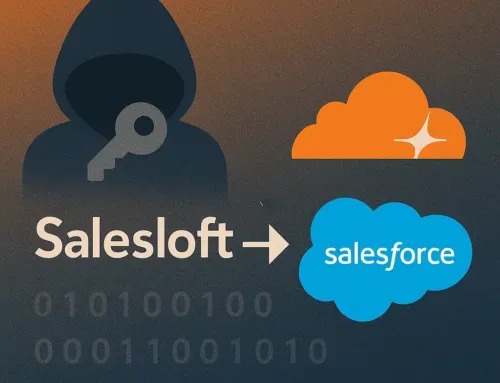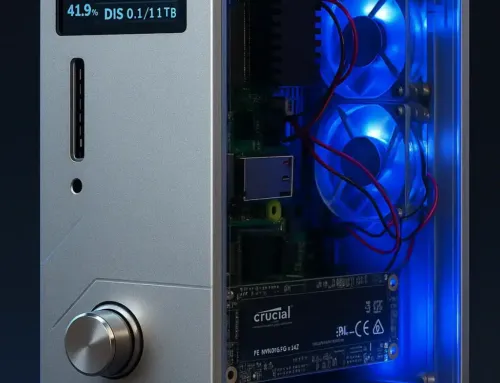
Approx. read time: 5.5 min.
Post: Hacking Satellite Internet with Basic TV Equipment: Uncovering the Vulnerability in Broadband Communications
Hacking Satellite Internet with Basic TV Equipment: Uncovering the Vulnerability in Broadband Communications
Introduction – Hacking satellite internet with TV equipment
The cybersecurity landscape was rocked by revelations at the Black Hat USA 2020 conference, where James Pavur, a PhD candidate from Oxford University, demonstrated how hackers could intercept satellite internet traffic using home TV equipment worth just $300. This astonishing discovery exposes the critical vulnerabilities in satellite broadband communications and highlights the ease with which malicious actors can exploit these weaknesses.
The Demonstration at Black Hat 2020
James Pavur’s presentation at Black Hat USA 2020 unveiled a straightforward yet alarming method of intercepting satellite internet traffic. Using a $90 satellite dish and a $200 digital video broadcasting satellite tuner, both easily available second-hand, Pavur demonstrated how he could capture unencrypted internet traffic. By pointing the dish at a known geostationary satellite and using signal-recording software, Pavur was able to intercept and analyze HTTP traffic from various entities, including law firms and IoT providers, all from his location in the UK (Hackread) (DevNet).
The Vulnerability in Satellite Broadband Communications
Satellite internet providers often transmit data unencrypted to minimize latency over long distances. This unencrypted transmission creates a significant security gap that can be exploited with minimal investment. The vulnerability lies in the broadcast nature of satellite communications. When a satellite internet service provider (ISP) forms a connection, the signal is beamed up to a geostationary satellite and then sent back down to a terrestrial receiving hub. This downlink transmission, which carries customer traffic, is broadcast over a wide area, making it accessible to anyone with the right equipment (Hackread).
Impact on Organizations and Sensitive Information
Pavur’s research uncovered a plethora of sensitive information through his demonstration. He intercepted details about maritime shipping, personal information of yacht captains and airplane Wi-Fi users, and confidential data from a law firm. This included usernames, passwords, and other sensitive corporate and personal information. The ability to intercept such data poses a significant threat to organizations that rely on satellite broadband, particularly in regions where fixed internet connectivity is limited (DevNet).
Potential Threats and Implications
The technique demonstrated by Pavur is not only feasible but also potentially lucrative for cyber attackers. While it might be challenging to target specific organizations, intercepting data from large entities can yield sensitive information that can be monetized or used for malicious purposes. The broad geographical attack area enabled by satellite communications means that attackers can operate from thousands of miles away, intercepting traffic with little to no risk of detection (Hackread).
Recommendations for Securing Satellite Communications – Hacking satellite internet with TV equipment
Pavur’s findings highlight the urgent need for improved security measures in satellite communications. Organizations must take proactive steps to protect their data transmissions. Here are several recommendations:
- Implementing Encryption: Encrypting all data transmitted via satellite broadband is crucial. Encryption ensures that intercepted data cannot be read or used by unauthorized parties.
- Configuring Firewalls: Properly configured firewalls can help monitor and control incoming and outgoing traffic, preventing unauthorized access and data breaches.
- Regular Security Audits: Conducting regular security audits and vulnerability assessments can help identify and address potential weaknesses in satellite communication systems.
- Training and Awareness: Educating employees and stakeholders about the risks associated with satellite communications and best practices for security can significantly reduce the likelihood of successful cyber attacks (Hackread) (DevNet).
Detailed Breakdown of the Attack Method
To understand the vulnerability better, let’s break down the attack method demonstrated by Pavur:
- Equipment Setup: The necessary equipment includes a satellite dish (which can be obtained for about $90) and a digital video broadcasting satellite tuner (available for around $200). This setup allows for the reception of satellite signals intended for internet data transmission.
- Locating a Satellite: Using public information about the locations of communication satellites, the attacker points the satellite dish at a known geostationary satellite.
- Signal Capture: The attacker uses software tools, such as EPS Pro, designed to find satellite television channels, to scan the Ku band of the radio spectrum. This helps identify signals against background noise, allowing the attacker to lock onto a connected satellite.
- Data Analysis: The intercepted data is recorded and analyzed. By searching for specific patterns, such as the string “HTTP” in the raw binary file, the attacker can distinguish between internet traffic and TV feeds (DevNet).
Real-World Implications – Hacking satellite internet with TV equipment
The implications of Pavur’s research extend beyond theoretical risks. His team successfully intercepted real-world traffic, including sensitive email communications between a lawyer and a client. The ability to capture such data demonstrates the practical risks posed by this vulnerability. Furthermore, the interception of unencrypted credentials for critical infrastructure, such as wind turbines, highlights the potential for catastrophic consequences if attackers gain control over such systems (DevNet).
Future Considerations and Industry Response
Looking forward, it is essential for the satellite internet industry to enhance the security of its communications. This involves not only implementing encryption but also developing more secure communication protocols and standards. Regulatory bodies may need to step in to establish guidelines ensuring that all satellite broadband providers adhere to best practices for data protection.
Additionally, continuous research and development in cybersecurity are crucial to staying ahead of potential threats. Collaborative efforts between academia, industry, and government can drive the development of more robust security solutions for satellite communications.
Conclusion – Hacking satellite internet with TV equipment
The demonstration by James Pavur at Black Hat USA 2020 serves as a critical reminder of the vulnerability of satellite internet traffic to interception. With basic TV equipment worth just $300, cyber attackers can spy on sensitive communications from vast distances, posing a significant threat to organizations relying on satellite broadband connections. As satellite communications become more prevalent, it is imperative for organizations to be vigilant in securing their data transmissions. By implementing encryption, configuring firewalls, conducting regular security audits, and raising awareness, organizations can mitigate the risks and protect their sensitive information from cyber threats.
The industry must take proactive steps to address these vulnerabilities and ensure the continued security and reliability of satellite broadband communications in our increasingly connected world (Hackread) (DevNet).
Related Videos:
Related Posts:
Exploring the Latest Innovations: A Deep Dive into iOS 17.4 Beta 4’s New Features and Enhancements
Elon Musk’s Unique Interview Question to Uncover Honesty and Problem-Solving Skills
North Korea shows Kim Jong Un examining a military spy satellite that may be launched soon









